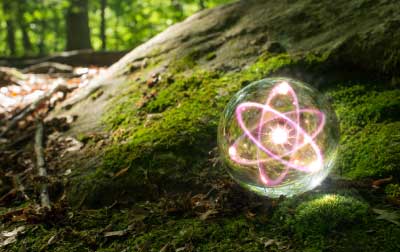Nuclear energy is a safe investment opportunity

Nuclear power plants require a large amount of up-front capital, take a long time to build, and have a slow payback period. So why should stakeholders, especially those in the private sector, invest?
The simple answer is that there is a growth market for it.
To eliminate greenhouse gas (GHG) emissions by 2050, there must be a rapid transition from fossil fuels which currently provide more than 80% of the world’s energy — to cleaner, low-carbon sources. And experts agree that nuclear power will play a large role in the new energy mix along with wind and solar.
Nuclear power is a reliable, stable source of electricity that is not affected by weather conditions. It can operate 24/7, 365 days a year, and generates large amounts of electricity at a low cost. Currently, electricity production accounts for approximately 25% of the world’s GHG emissions, second only to the transportation sector (28%). Nuclear power generates about 10% of the world’s electricity and more than 25% of its low-carbon electricity – second only to hydropower. [1] However, about 63% of the world’s nuclear power plants are more than 30 years old, [2] which means they are nearing the end of their useful life and need to be replaced. Many countries are doing so with similarly large reactors that can generate an average of one gigawatt of electricity. Others are exploring small modular reactors (SMRs), which have a power output of 300 megawatts or less but can be built in factories and installed on site.
Either way, substantial investment and support will be needed to facilitate both old and new technologies.
On the investment side, there are many sources to explore, including financing from the private sector, government tax incentives, grants and subsidies, loan guarantees, and environmental, social, and governance opportunities, which are discussed in the “Nuclear Financing in Canada” report that we prepared for the Canadian Nuclear Association in February of 2023.
As for support, clients who have partnered with Hatch have benefitted from our decades of experience in the nuclear power industry. We are experts in engineering procurement construction management, regulatory requirements, uranium fuel fabrication, power generation, new builds, refurbishments, nuclear waste management, and long-term storage. As for new technology, we have more than a decade of unparalleled experience and know-how in the SMR arena where we’ve provided numerous services, including power station options studies, downstream integration, site investigations, and development programs.
Additionally, Hatch already works in many of the industries interested in utilizing existing nuclear infrastructure and/or SMRs, including the mining, metals, and oil and gas sectors. This experience means we know the facilities, process systems and unique characteristics of our clients’ systems, coupled with project execution experience. All of which puts Hatch in the unique position of being able to help clients evaluate investment risks, and plan, design, procure facilities, process systems and unique characteristics along with project execution experience and construct the appropriate nuclear technologies to ensure net-zero compliance by 2050.
When it comes to nuclear, SMRs, and/or fusion – Big. Small. New. Refurbished. Whatever your plans, whatever your scope. We can help.
To learn more about our Nuclear capabilities visit our Nuclear webpage.
References
- World Nuclear Association, April 2023: Nuclear Power Today | Nuclear Energy
- International Energy Agency, September 2022: Nuclear Power and Secure Energy Transitions
Related content:
Powering tomorrow’s steel mills with nuclear energy
Coal Power Plants and Nuclear Power: A Perfect Marriage?
Uncovering downstream opportunities for small modular reactor technology
Unlocking a sustainable energy mix with nuclear
